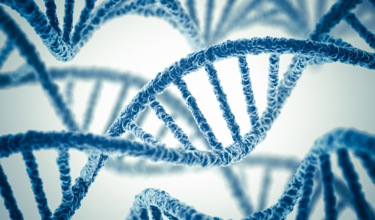Castle Creek Biosciences' D-Fi To Be Manufactured At In-House cGMP

By Erin Harris, Editor-In-Chief, Cell & Gene
Follow Me On Twitter @ErinHarris_1

Castle Creek Biosciences is a clinical-stage cell and gene therapy company leveraging its proprietary fibroblast technology platform to develop and commercialize innovative personalized therapies for underserved disorders with high unmet medical needs. Recently, Castle Creek Biosciences announced the first patient has been dosed in the DeFi-RDEB Phase 3 clinical trial evaluating debcoemagene autoficel (D-Fi), the company’s lead gene therapy candidate formerly designated FCX-007, in recessive dystrophic epidermolysis bullosa (RDEB).
John Maslowski, Castle Creek Biosciences’ CEO and I discussed the company’s plan to manufacture D-Fi at its in-house cGMP, commercial scale facility and what that means for the cell and gene sector.
Castle Creek is manufacturing D-Fi at its in-house cGMP, commercial scale facility. What special measures, if any, must be taken to manufacture D-Fi in house (i.e. new equipment; procedures; etc.)?
Maslowski: As we continue to advance our lead candidate and expand the scope of our gene therapy platform to target additional diseases with unmet needs, we are also upgrading our cGMP infrastructure at our existing facility. Within our ~90,000 square foot facility is 13,000 square feet of cGMP manufacturing space with the ability for significant future expansion. The cGMP space is an integrated operation with cleanroom manufacturing, cryogenic storage, QC laboratories and shipping/receiving areas. We have also developed support systems for the manufacture and distribution of autologous therapies including quality control systems, customer service, tracking and traceability processes, aseptic control, inventory management, a raw material testing program and cold-chain distribution to ensure cell viability, sterility and potency are maintained during transport.
Does Castle Creek manufacture all its therapies at the Exton, PA facility? Why or why not?
Maslowski: Yes, all our investigational therapies are manufactured at our Exton, PA facility. Manufacture of our gene therapy candidates is served by multiple segregated production zones. Our facility has a long history of manufacturing autologous fibroblasts and has been previously inspected by the U.S. Food & Drug Administration for commercial manufacture of autologous fibroblasts. We have extensive experience at this facility with the establishment and validation of cGMP systems required to scale up gene therapy manufacturing for late phase and commercial supply.
Explain in-house manufacturing of D-Fi benefits in detail.
Maslowski: In-house manufacturing operations offer significant advantages long term including internal quality control and oversight of all processes, as well as the ability to plan for and ensure availability of cGMP product to supply clinical trials and eventually, commercial demand. We believe our state-of-the art, in-house facility has the capability to produce clinical and future commercial-scale supply of our gene therapy candidates, with room in our existing facility for future expansion. As a result, we believe the company is well positioned to continue its growth and be a leader in creating novel gene therapies with the potential to transform lives of patients and families, while contributing to the life sciences community that is taking off in the Philadelphia region.
Regarding D-Fi, help Cell & Gene readers better understand its characteristics.
Maslowski: D-Fi is developed using a patient’s own fibroblast cells that are collected in a small skin specimen and shipped to our manufacturing facility. Then we genetically modify the cells using lentivirus containing a functional collagen gene. It is important that this integration can happen ex vivo in our facility — the virus is not delivered to the body. Eventually we have enough gene-modified fibroblast cells for a personalized bank for each patient and can send the treatment back for localized administration.
